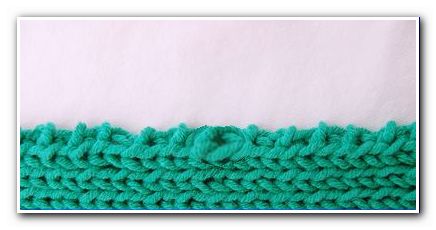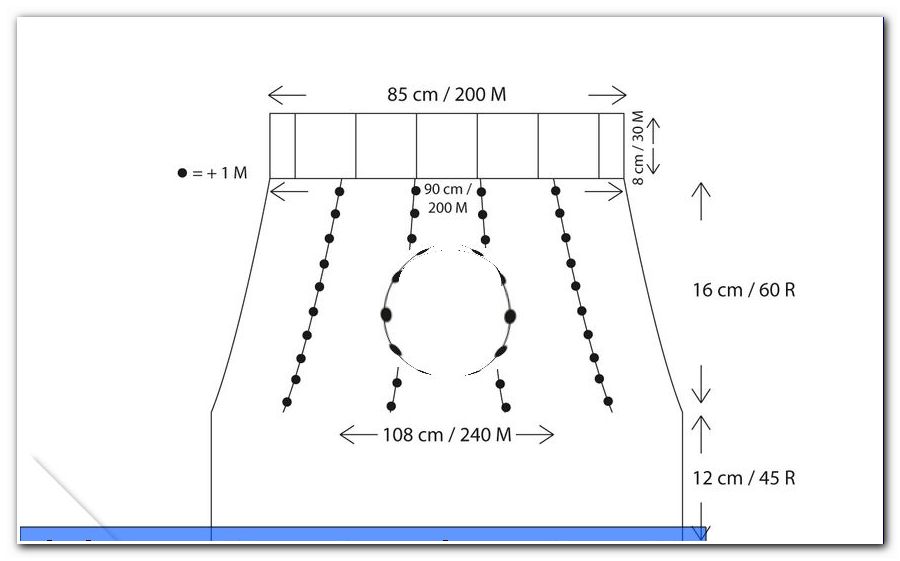Mount snow guard - a 6-step guide

- General information
- Attaching a snow guard
- Set up scaffolding
- Different snow guard systems
In winter, snow on the roof can be a danger to passers-by and vehicles. If parts of the snow masses move on a pitched roof, they can slip off the roof and fall on people or cars. In order to avoid this, it is necessary to install a snow guard. Learn how to best attach the grille.
Due to the weight of the snow and the high fall height even smaller chunks develop enormous power, so that people can be injured by the snow masses. With the help of the snow guards you therefore protect passers-by and parked vehicles in front of the house. In order for the components to be effective and not fall down together with the snow, professional installation is crucial. Add to that the question of your own safety, because you have to work on the roof. Therefore, you should read what steps you must take and how to protect yourself.
General information
Information about attachment
You attach the snow guards directly to the roof battens. It is directly accessible during the new construction, so installation is easiest during this period. After completion of the house roof, you will need to remove some shingles to gain access. If you encounter storm clips, you will need to reinsert them afterwards.
Distance of snow guards from the roof edge
About the perfect distance from the snow guards and the edge of the roof and thus the ideal position of the protection is not the same opinion among experts. It is often recommended to place the grille behind the second row of shingles. The goal is to catch as much snow as possible. If you put the grid too high, then the snow below the component would slip off unhindered.

The dangers in the execution of the works
- You can crash during the work.
- When working on the roof, it is important to pay attention to your own safety. Therefore, check in advance all tools used for any previous damage and ensure a stable position of the ladder. You may be helped by a second person who has some guidance from the leader. A scaffold provides a better grip and allows comfortable working.
- Carelessness can damage the roof
- If there is accidental damage to the roof, then follow-up costs for the repair or water can penetrate into the interior. Therefore, it is important to do every step well and act carefully.
- The snow guard is not properly attached and slips down together with the snow masses.
- Considering that one liter of water (= 10 cm x 10 cm x 10 cm) already weighs about 1 kilogram, then one can calculate the weight of a snowdrift. Therefore, the snow guard must be firmly attached. When tearing it not only falls down but can also severely damage the roof itself.
Advantages and disadvantages
Snow catch hooks require a greater effort during installation. However, they have the advantage that no icicles can form. When thawing, icicles are easily formed on the bars, which can be dangerous due to the pointed shape. This is not possible with snow catch hooks. Another advantage of the hooks is that they withstand even very large amounts of snow. 
Attaching a snow guard
You need this material and tools
- Tape measure or folding rule
- Snow hampers
- Fasteners including galvanized screws
- Scaffolding or ladder
- screwdriver
- wrench
- self-protection
- If necessary, further tools
Step 1 - Measuring
First determine the appropriate length for the snow guard. The decisive factor is the roof width, which must be measured.
Tip: When measuring it is an advantage if you work as a couple. Pass a tape measure from one side to the other and pull it taut.
Step 2 - Setting up the scaffolding
The scaffolding gives you a safe and comfortable working place. You can move more freely than on a ladder and also the safety is much higher. In any case, the scaffolding must be high enough to reach the edge of the roof. Decisive is also the underground. Only if the scaffolding is stable, the security is guaranteed.
Step 3 - Remove the shingles
First, remove some shingles to get access to the roof battens. 
Step 4 - Mounting the brackets
To do this, you must screw the brackets to the roof battens.
Step 5 - Hang the shingles
After mounting the brackets, you have to hook up the shingles again.
Step 6 - Mounting the snow guards
Finally attach the grille to the brackets. It is important to pay attention to the correct fit. First of all, tighten the brackets only lightly. Then align the components and tighten the screws.
Set up scaffolding
When installing snow guards, snow guard rails and snow guns, it is safest to work on scaffolding. Small versions are quickly set up and ready for use on a flat surface. For particularly high houses or uneven or uneven ground, however, a specialist company is required.

In general, it is recommended to always use a scaffold from a working height of at least 3 meters. This property is usually given when attaching the safety grille or the snow tailpipes.
Tip: When selecting the scaffold, always pay attention to the quality, as there are great differences.
A general list of the individual components of the scaffold:
- Anchoring with the house wall
- Foot spindles (feet of a scaffold)
- Diagonal fixtures
- Guard rails
- Toe boards
- Guard rails
- end guardrail
- eyebolts
- vertical frame
- Flooring
- Create the right ground
It is best if a scaffold can be built on a level concrete floor. In order to stabilize other surfaces a little, suitable are boards that are placed under the foot spindles.
- Set up the foot spindles
To ensure the safety of the scaffold, the foot spindles to the house wall should not have a distance of more than 30 centimeters. The closer they are to the wall, the lower the risk of accidents.
- The diagonal fixings
Slide the diagonal fasteners over the outer foot spindles.

- The back railing
Now hang a back railing in the diagonal fasteners to be able to align the correct distance of the foot spindles.
- Setting up the vertical frame
Now set up the first two vertical frames.
- The diagonal
Then hang the first diagonal from the outside. The components are usually provided with two holes. For the lower floor, the inner hole is used, in the next level, the outer hole is used.
- wood coverings
Lay the wooden floor to the first floor.

- Align the first floor
With the help of the foot spindles you now have to align the first floor horizontally and vertically. This is important so that later all other levels have the right direction.
- The extension
After the first area is completed, you can make extensions to the left and right.
- The next level
First, set up two frames and stabilize the scaffolding with wooden flooring. Then hang the back railing and secure it by using the tilting pins. Then attach the second diagonal.

- The walk-through
The passages serve to be able to get further up. Therefore, all other levels must be equipped with a walk-through. Hang in the hatch a ladder.
- The insurance
Outside and on the front sides you must now attach the lower board boards. The end faces are additionally provided with couplings. Thus, the second level has a hedge on three sides.
- The anchorage
Now it is important to ensure the secure state of the scaffold. With the help of the scaffold anchors you now have to fix the scaffold to the wall.
Tip: Make sure that the dowels are suitable for the house facade and are about 10 centimeters long.
 Place the dowels under the coverings on the second floor and place them in the masonry. Now screw the eye bolts into the dowels. At the front sides you have to fix the framework even more stable. To do this, take a long scaffold holder and fasten it together with the eyebolt on the scaffold via two normal couplings.
Place the dowels under the coverings on the second floor and place them in the masonry. Now screw the eye bolts into the dowels. At the front sides you have to fix the framework even more stable. To do this, take a long scaffold holder and fasten it together with the eyebolt on the scaffold via two normal couplings.
- Find the conclusion
If the framework consists of two levels, then it is almost finished. Finally, attach the L-Scaffold poles and hook in the crossbars. Secure the scaffold with a side guard, toe boards and headrail analogous to the first level.
You must take this into account when setting up the framework:
- Pay attention to a safe and kipppfesten state
- Maximum load must never be exceeded.
- Maximum height must never be exceeded.
- work carefully on the scaffold.
- Keep a safe distance to cables and electrical components. Turn off the power if necessary.
- Scaffolding can often be borrowed from specialist companies.
- Avoid trip hazards on the scaffolding.
- Check the stability of the anchorage and floor coverings before starting work.
- For the winter weather protection roofs are offered.
Different snow guard systems
Various snow guard systems are available on the market:
- Snow hampers
- Snow guard beams
- Snow fence pipe
- Snow hook

The snow guard
Through the grid, the snow accumulates in the eaves area and can not fall down unchecked. This is the variant most frequently used in Germany. For proper function, it is important that the attachment is stable. Not only planar but also selective forces are acting, which have to be resisted.
The snow gantries and snow tailpipes
Snow gullies and snow catcher pipes are mainly used in particularly snowy areas. They withstand larger amounts of snow and are also attached to the eaves of the roof.

Snow hook
The special feature of snow catch hooks is that they are distributed over the entire roof area. This prevents snow from slipping off. The goal is to keep the snow masses on the roof so that there is no shifting or slipping. It is particularly effective to use the snow catch hooks together with a snow guards. Thus, the snow is held on the roof and should it nevertheless come to a slipping, the snow remains hanging on the safety grille. However, this is largely relieved.
Is there a legal obligation in Germany to install a snow guard ">  Basically, homeowners are not required to install a snow guard system. However, it is important to ensure general road safety, which indirectly results in many cases in the obligation to install snow guard systems. Homeowners must take all reasonable precautions to avoid accidents. Should it come to a damage, the house owner is called in to the adhesion. If no backup has been made, usually 50 percent of the damage must be taken over. If it is a roof with a tilt angle of more than 50 degrees, then even a liability of 100 percent comes into question. However, you must always observe the regional characteristics. In some regions diverging laws may apply, which result from the different frequencies of snowfall. In many communities in Bavaria, therefore, the installation of snow guard systems is required.
Basically, homeowners are not required to install a snow guard system. However, it is important to ensure general road safety, which indirectly results in many cases in the obligation to install snow guard systems. Homeowners must take all reasonable precautions to avoid accidents. Should it come to a damage, the house owner is called in to the adhesion. If no backup has been made, usually 50 percent of the damage must be taken over. If it is a roof with a tilt angle of more than 50 degrees, then even a liability of 100 percent comes into question. However, you must always observe the regional characteristics. In some regions diverging laws may apply, which result from the different frequencies of snowfall. In many communities in Bavaria, therefore, the installation of snow guard systems is required.
Tips for quick readers:
- Fit the grille after the second row of shingles
- Mount directly on the roof lighting
- Mounting is mandatory in some communities
- Snow catch pipes with particularly high snow load
- Use Scheefanghaken as a supplement
- Remove shingles first
- Mount brackets
- Hook in shingles again
- Fit the safety grille
- First, screw in the screws only loosely
- then align the grid
- Tighten screws
- pay attention to intrinsic safety
- to work together




